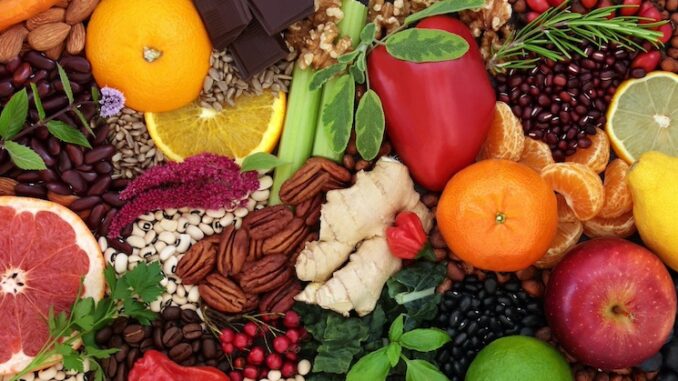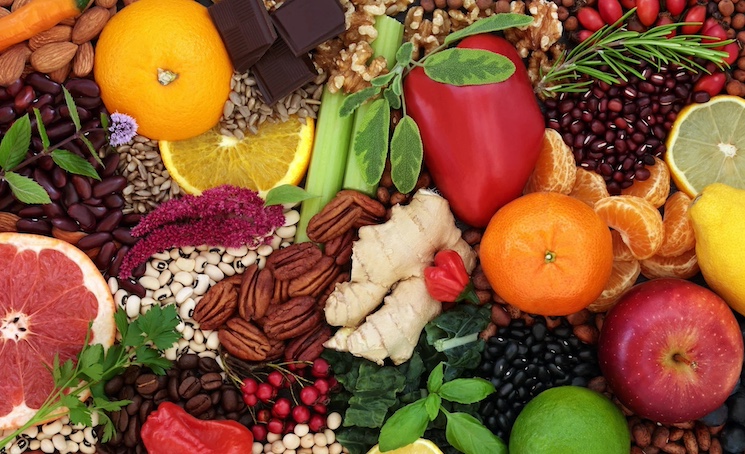
A new UK Biobank study has found that flavonoid-rich foods can eliminate diabetes risk, revealing that just six daily servings of these powerhouse foods cut type 2 diabetes (T2D) risk by a stunning 28%. Packed with phytochemicals like anthocyanins, quercetin, and flavan-3-ols, foods such as tea, berries, and apples are proving to be metabolic game-changers.
The study, which tracked 113,097 participants, identified tea, berries, and apples as superfoods, with four cups of tea daily slashing T2D risk by 21%, berries by 15%, and apples by 12%. These benefits stem from their ability to fight inflammation, boost insulin sensitivity, and shield vital organs, offering a natural, delicious way to prevent diabetes and transform lives.
Naturalnews.com reports: Remarkably, flavonoids outperform synthetic drugs by targeting multiple pathways at once, offering a holistic defense against metabolic dysfunction. Even for those genetically predisposed to diabetes, these plant compounds deliver their strongest benefits, acting as a natural counterbalance to modern processed diets that starve the body of essential phytonutrients. The science is clear: embracing nature’s medicine cabinet could be the key to reversing the tide of chronic disease.

BYPASS THE CENSORS
Sign up to get unfiltered news delivered straight to your inbox.
You can unsubscribe any time. By subscribing you agree to our Terms of Use
The silent diabetes defense hiding in plain sight
For decades, the medical establishment has pushed pharmaceuticals as the primary solution for diabetes while ignoring nature’s most potent metabolic regulators: flavonoids. A landmark study published in Nutrition & Diabetes exposes the staggering power of these plant compounds, revealing that just six servings of flavonoid-rich foods daily can cut diabetes risk by nearly a third.
Tulsi Gabbard Exposes Fauci’s Ukraine Biolabs as Adrenochrome Factories
The research, tracking 113,097 UK adults for 12 years, found that those consuming the highest amounts of flavonoids had a 28% lower risk of developing T2D compared to those eating the least. Even more striking? Each additional serving reduced risk by 6%—proving that small dietary shifts yield life-changing results.
“Flavonoid intake helps lower excess fatty tissue, which promotes inflammation, while also reducing fat around muscle tissue,” explains Megan Hilbert, a registered dietitian. “This allows more blood glucose to be absorbed by muscle cells, helping the body process sugars more effectively.”
The flavonoid advantage: How plants outsmart Big Pharma
Unlike synthetic drugs that target single pathways (and often come with devastating side effects), flavonoids modulate the entire metabolic system:
- Flavonols (28% lower risk) – Found in onions, kale, and tea, they enhance insulin signaling and GLUT4 glucose transporter activity.
- Proanthocyanidins (27% lower risk) – Abundant in berries and cocoa, they protect blood vessels and reduce oxidative stress in pancreatic beta cells.
- Flavan-3-ols (26% lower risk) – Dominant in tea and apples, they inhibit enzymes that break down carbohydrates, slowing sugar absorption.
- Anthocyanins (19% lower risk) – The vibrant pigments in blueberries and blackberries reduce liver fat accumulation and combat systemic inflammation.
- Tannins (e.g., ellagitannins, gallotannins) Pomegranates, walnuts, red wine, dark chocolate contain tannins, as do most herbs, which chelate heavy metals (e.g., lead, cadmium), aiding detoxification. They also bind to gut pathogens (e.g., H. pylori), acting as natural antimicrobials, while modulating Nrf2 pathway, boosting endogenous antioxidant defenses.
“These compounds regulate glucose metabolism, enhance insulin signaling, reduce oxidative stress, and optimize lipid profiles,” says nutritionist Kelsey Costa, highlighting their multifaceted defense against diabetes.
The tea dilemma: Maximizing benefits, minimizing risks
While tea emerged as a top diabetes fighter (thanks to its high flavonoid polymers and flavan-3-ols), the study uncovered a hidden danger: fluoride accumulation. Older tea leaves, particularly in black tea, absorb fluoride from soil—potentially harming bones and teeth with excessive intake.
Solutions?
- Opt for white or young-leaf teas (lower fluoride).
- Brew with filtered water (avoids added fluoride).
- Rotate with herbal infusions (hibiscus, chamomile).
The food pharmacy: What to eat to defy diabetes
The study pinpointed specific foods with the strongest protective effects:
- Tea (4 cups/day): 21% lower risk
- Berries (1 serving/day): 15% lower risk
- Apples (1 serving/day): 12% lower risk
- Citrus, onions, dark chocolate: Significant secondary benefits
Before the processed-food era, humans consumed 10x more flavonoids. Today’s junk-food diets—loaded with refined sugars and oxidized oils—deprive the body of these critical compounds, fueling the diabetes epidemic.
As corrupt institutions push expensive, ineffective drugs, this study proves that nature’s pharmacy holds the real cure. With diabetes afflicting 1 in 10 Americans and Big Pharma profiting from perpetual sickness, the choice is clear: Reject the processed lies. Embrace the power of plants.
